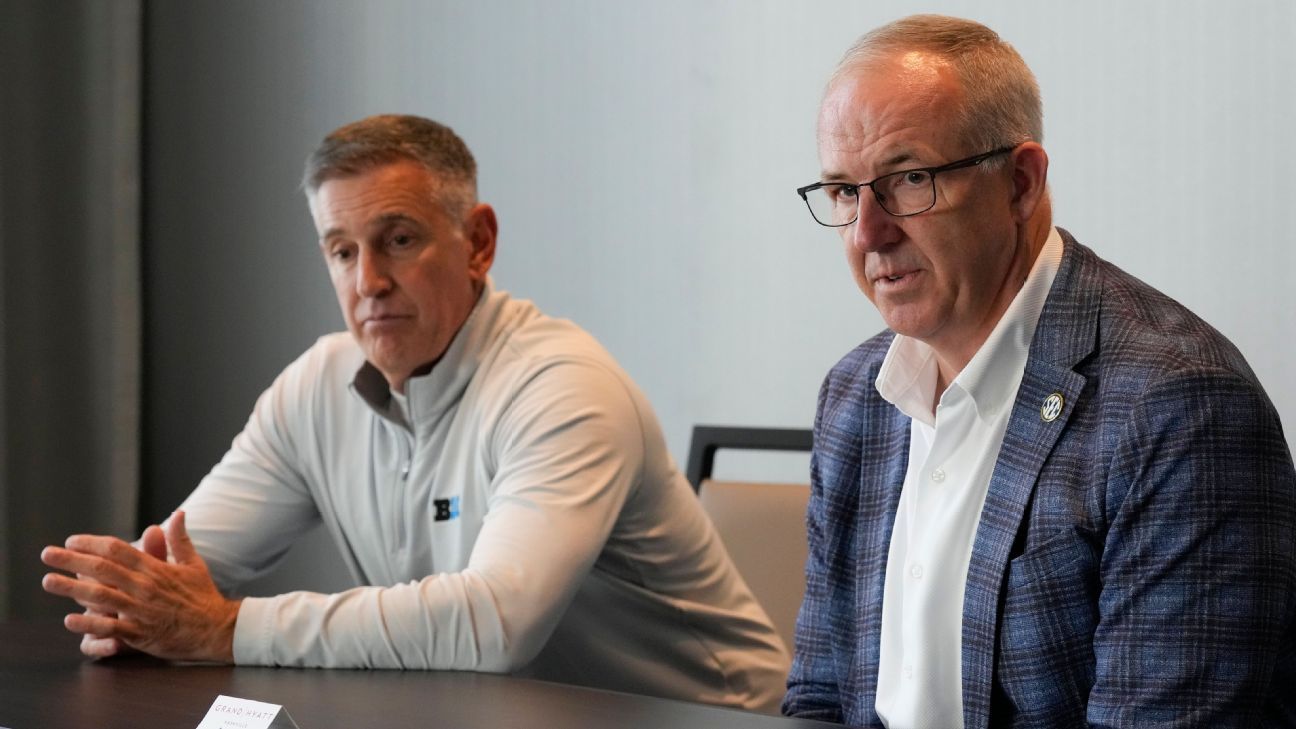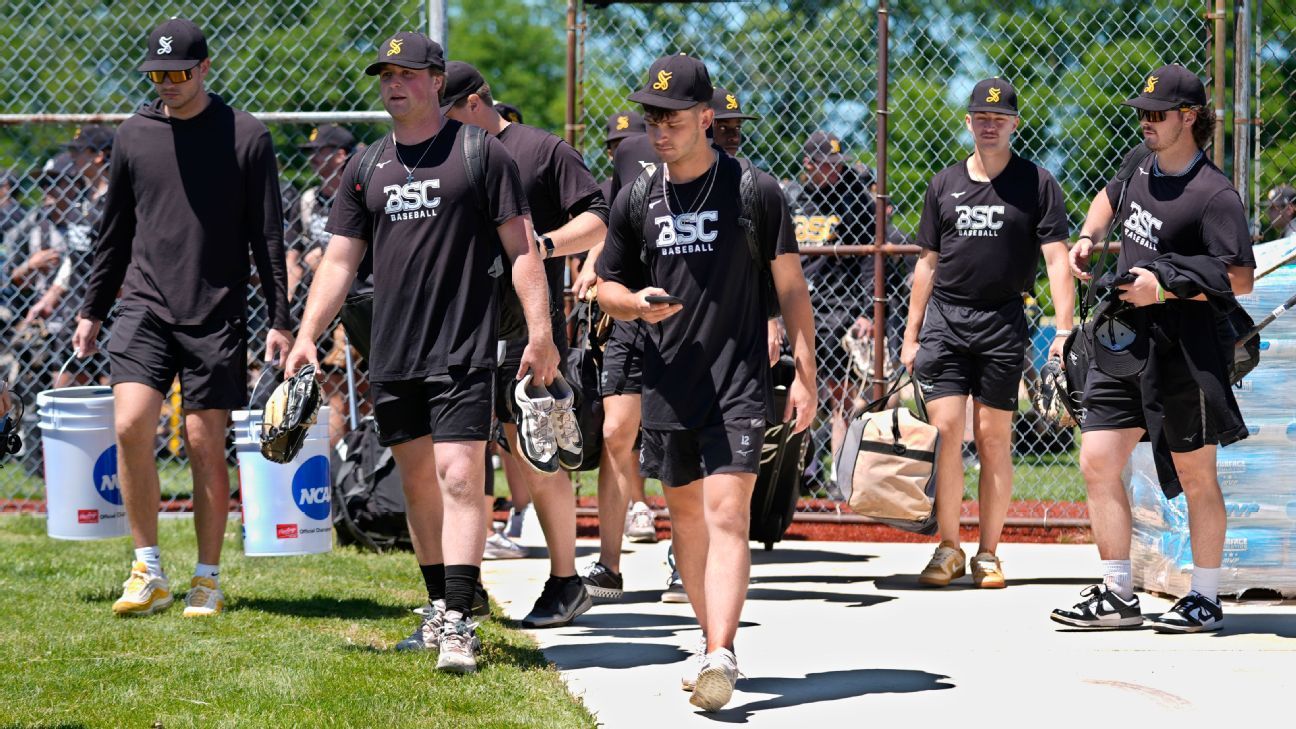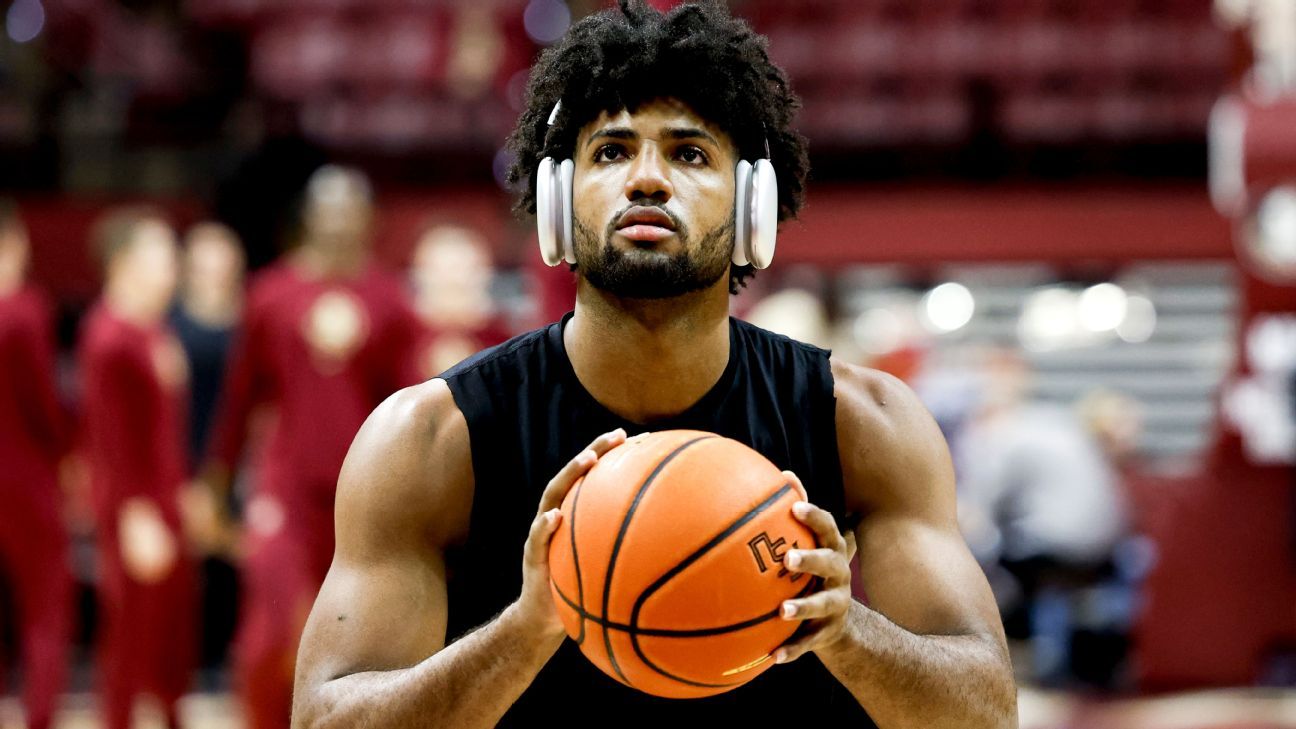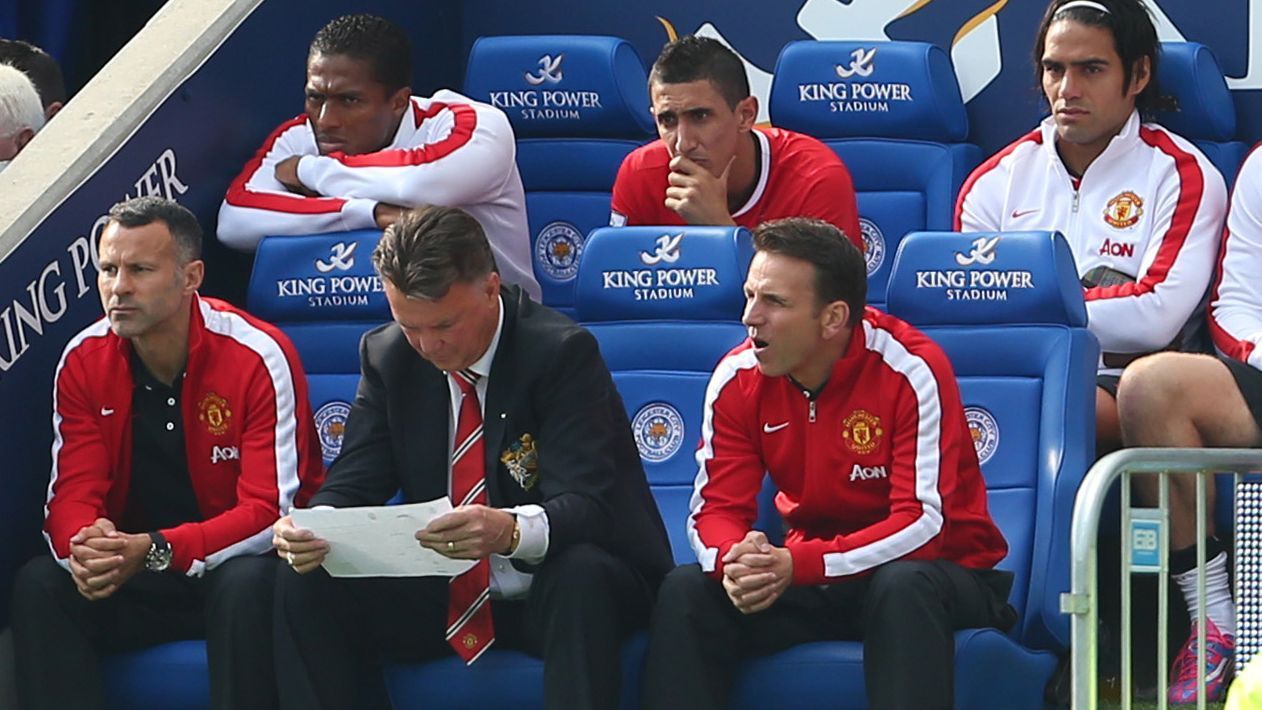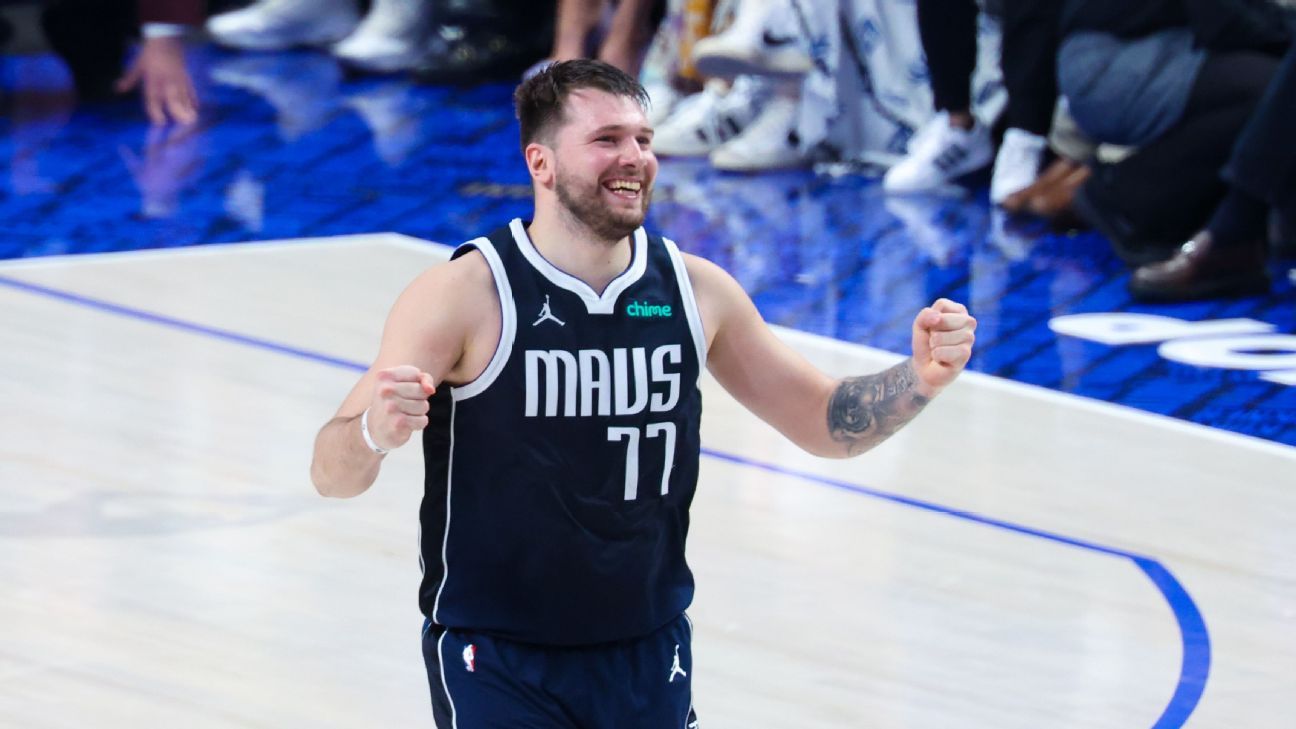NASHVILLE, Tenn. – Following an “unprecedented” meeting between the SEC and the Big Ten on Thursday, commissioners from both conferences addressed multiple important issues facing college athletics and strongly rejected recent proposals from private equity groups to help offset the increased expenses that will result from the expected NCAA House agreement.
It was an important united front from two of the most powerful people in college sports, as any drastic changes involving private equity are unlikely to gain national support without the backing of the SEC and the Big Ten.
“I have yet to see anything in any plan that I have known details of that contains things that we cannot do ourselves or our A4 colleagues,” Big Ten Commissioner Tony Petitti said. “At the end of the day, there is a strong commitment that we have the ability to do all of this ourselves.
“…The notion that college football is broken, what we do is broken, is just not correct.”
In February, the SEC and the Big Ten announced the formation of a joint advisory group, and this one-day meeting at the Grand Hyatt was a continuation of that, albeit with legal counsel present to make sure the two conferences didn't cross any lines. . That could be interpreted as collusion.
“Our legal counsel is very skilled right now in defining the boundaries of what we can talk about and what we can't talk about,” SEC Commissioner Greg Sankey said.
With the SEC now at 16 teams and the Big Ten at 18 after expansion, they are now the largest and richest conferences in the country. And Sankey and Petitti have most of the control over the future format of the College Football Playoff in 2026 and beyond.
However, even with the optics of Thursday's meeting, and the written guarantee of separation in both power and wealth in the CFP's most recent contract, Sankey said the perception that the SEC and the Big Ten are drifting apart of everyone else in college athletics with this association is inaccurate. He said he realized there was “a lot of commentary about our meeting” but reiterated that both leagues “accept responsibility for leadership.”
“We talk regularly with our other two colleagues on the home rule groups,” he said, referring to Big 12 Commissioner Brett Yormark and ACC Commissioner Jim Phillips. “Do we get everyone together? It was hard enough to schedule two athletic director conferences. I can't imagine trying to schedule four.
“We will share this with our colleagues. This is the beginning of a conversation for us. I don't think that perception is consistent with our conversation today, where we recognize that we are part of a larger ecosystem, but we're also interested in what that we could achieve together.
With all 34 athletic directors from the major conferences gathered in a meeting room, the conversation largely focused on the impending House deal, which recently received preliminary approval, but there was also interest from both leagues in finding a way to schedule more soccer games against each other. other.
“Is there a way for us to be intentional in our programming?” said Sankey, who was in Ann Arbor last month to watch Texas at Michigan. “It was just an incredible experience, and you stand on the sidelines before kickoff thinking, what if we could do this more with our non-conference games? We respect where we have state rivalries that take place on non-conference programming, but we had a real experience.” general conversation about what ifs in football and basketball.
Petitti said part of the discussion is about those games being scheduled organically on campus through athletic directors having conversations.
“The question is, is there a structure where the two league offices work together to create more of those matchups?” Petitti said. “We had a pretty big discussion about the path to playing more with each other, seeing if you can figure out how to do it; deciding what games you want, how many, but that's a broad discussion.”
Sankey said some athletic directors in the room pointed out that some games being played this year were scheduled a decade ago, “almost a point of encouragement to say, 'let's not wait that long.'”
Leaders from both leagues also discussed pending roster limits and the future of NCAA governance, and Sankey said “it has to change.” At a recent Division I Council meeting, Sankey said he told the room that “the Division I Council is not working, given what is changing around us.”
“The board at the Division I level has to change, and it has to change quickly,” Sankey said. “That's the view of the members of my conference, our presidents and chancellors. I shared that perspective, but I don't think we're alone. I don't think it's just two conferences that share that.”
Sankey and Petitti agreed that they both want to see how the 12-team CFP field develops before making decisions about what might change when the next contract begins in 2026.
“This has to go incredibly well,” Sankey said. “This has to be a successful launch. This is not the time to talk about governance in the 26th or the format in the 26th, but the immediate implementation is in front of us.”
Oklahoma athletic director Joe Castiglione said the meetings were productive and that “considerable time” was spent implementing the House agreement.
“It was an opportunity to learn from each other and have important conversations,” Castiglione said. “It was good to be in a room and compare notes with other athletic directors facing common challenges.”

